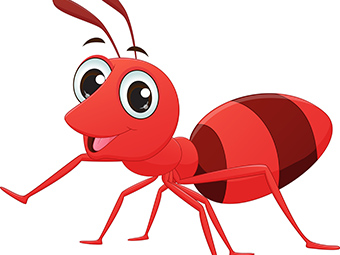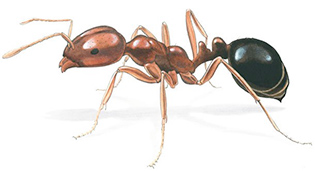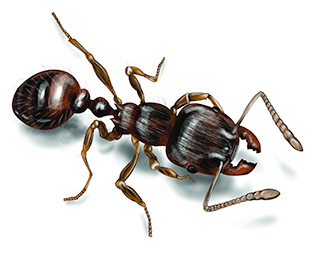Pain and Anguish: Identification of the Campus Stinging Ants
Pain and Anguish: Identification of the Campus Stinging Ants
By Bill Willis and Bill Steinmetz
June 20, 2018
Story Highlights
- The invasive fire ant is native to South America while the pavement ant is native to Europe
- Fire and pavement ants sting when agitated or disturbed, fire ants being more active and aggressive
- The colony shape and the ant anatomy help distinguish between these two types of ants

Imported fire ants and pavement ants are now part of the North Carolina landscape. The spread of these ants presents a safety concern to humans, livestock, native wildlife and an economic loss because of their aggressive nature. Both ants enter dwellings in search of food and can cause personal harm and possible structural damage.
The over 1000 ant species in North America and 178 species in North Carolina most serve an important role in the environment. They do help with soil aeration, insect control, and landscape cleanup. Only a few of the North Carolina species come into direct conflict with humans. The imported fire ants and the pavement ants are among invasive species that do, so it’s good to be able to identify them.
What Are Some of the Distinguishing Differences That Help Tell These Two Species Apart?

Photo courtesy of Pinterest TexasMonthly
Fire Ant
Solenopsis invicta (Buren)
- Anatomy
- Considered a medium sized ant (casts differ)
- 1/16 - 1/5 inch long
- Reddish brown in color, dark abdomen
- Stinger is prominent
- Two nodes between thorax and abdomen
- No spines at end thorax
- No distinctive grooves on head and thorax
- Head narrower than the abdomen
- Antenna with 2 clubs and 10 segments

Photo courtesy of Bill Willis
- Habits
- Bite and sting when threatened
- Active and aggressive, will battle
- Omnivorous (live or carrion)
- Found coast to coast, up to Virginia (cold limits)
- Nest in ground, mound raised multiple entrances
- Open ground or low grass
- Underground tunnels
- 250,000 ants in colony
- 500,000 maximum reported
- Multiple queens

Photo courtesy of Pinterest Arizona
Pavement Ant
Tetramorium caespitum (Linnaeus)
- Anatomy
- Considered a small ant
- 1/10 – 1/6 inch long
- Dark brown to black, pale colored legs
- Stinger not prominent
- Two nodes between thorax and abdomen
- Thorax spines, and stiff hairs over body
- Distinctive grooves on head and thorax
- Head wider than abdomen width
- Antenna with three clubs, 12 segments

Photo courtesy of Bill Willis
- Habits
- Sting only when threatened
- Rarely aggressive, territorial, will battle
- Sweets, honeydew
- Found in all 50 states
- Mound volcano-like entrance
- Under sidewalk, pavement, foundations, rocks
- Distinctive foraging trails
- 3000 to 5000 ants in colony
- 30,000 maximum reported
- Multiple queens possible, usually only one
Stay tuned for a future article that will explore ways to control these biting and stinging critters.
Editors Note: The author acknowledges the presence of native fire ants in the United States, that include: Southern, Tropical, Desert and Little fire ants. The black fire ants also live in a few southern states where it causes crop and agriculture damage by eating plant stems and fruit as well as by protecting aphid that suck out plant juices. All these are capable of stinging but don’t pose a problem in North Carolina.



